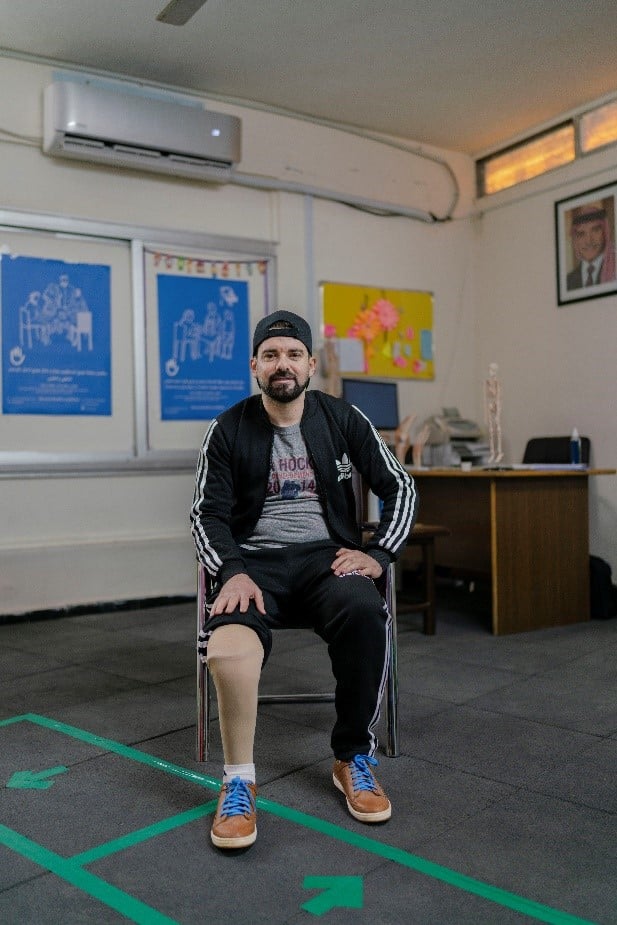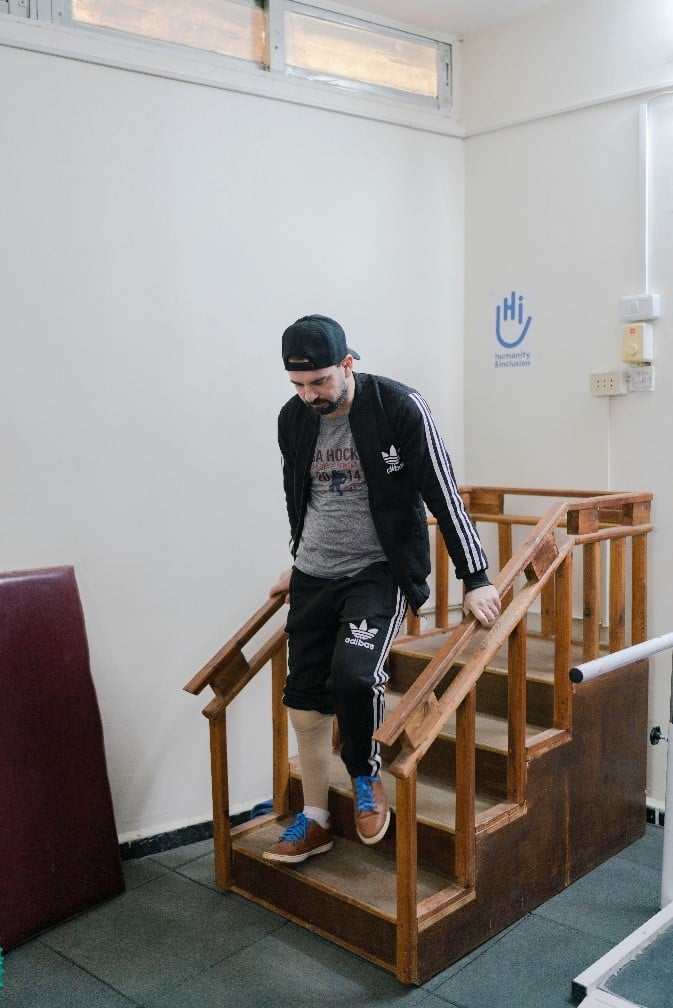Injured by the war in Syria, this is Omar’s story.
Omar, 35 years old, is from Daraa, Syria. A husband and father to a son and now two daughters. Omar and part of his family fled the war-torn country in 2013 to find refuge in Irbid, a city in the north of Jordan.
In 2012, when Omar was 24 years old, he was spending time in his garden when he was injured by a shell, a large-caliber projectile fired from a tank. Home alone at the time he was fortunate that his neighbous were able to help him.
“I can’t remember anything about it, only that I woke up in the hospital,” Omar explains.
When he woke up, Omar was told what had happened. His neighbous had managed to get hold of a doctor who came to his home. The doctor took Omar to a field hospital set-up in an underground tunnel where the medical team immediately amputated his right leg below the knee.
After only 2 days, Omar was discharged and sent home – or to what was left of his home – to recover. He was provided with crutches and a doctor made home visits. Once his limb was healed, he received his first below-knee prosthesis.
In 2013, Omar fled Syria for Jordan with his wife and daughter, while the rest of his family, including his son, stayed behind in Syria. By the time he reached Jordan, his prosthesis was in very poor condition. UNHCR referred him to HI for rehabilitation services and a new prosthesis.
 The Syrian crisis
The Syrian crisis
There are an estimated one million registered and unregistered Syrians now living in Jordan. They account for around 10% of the population. This increase in the size of the country’s population has put pressure on local infrastructure, resources and services.
HI launched a response to the Syrian refugee crisis in Jordan during the summer of 2012. Until 2014, the focus was on providing direct rehabilitation services to vulnerable populations, especially Syrian refugees. In 2014, HI changed its approach to capacity-building for local actors and health system strengthening.
Community based rehabilitation services
Hamzeh Aqel, HI’s Rehabilitation Project Manager in Jordan, explains that HI has a partnership with the Community Development Center in Irbid, a city located north of Amman, the capital.
This center provides community-based rehabilitation services to Syrian refugees, Palestinian refugees and vulnerable Jordanians. The center works with community-based volunteers to increase access to services for vulnerable people. These volunteers identify beneficiaries in their community based on needs. Most of the people assisted are adults and children over 7 years old. Approximately 70% of them are Syrian refugees.
The center helps beneficiaries with functional limitations to access quality and comprehensive rehabilitation services. After an assessment, a treatment plan is put in place for each patient. Depending on their needs, they receive different types of therapy, which can include rehabilitation services, mobility aid and psychosocial support.
HI provides the center with all its mobility aids (wheelchairs, crutches, walking aids, etc), training for staff and volunteers, quality control, capacity building and more.
 A new prosthesis
A new prosthesis
Omar comes to this center for regular check-ups and new prostheses.
Since fleeing Syria, he has settled in Irbid. He has found a job in a supermarket and is trying to ease back into a normal life while learning to accept his disability. His biggest hope is that one day he will be reunited with other members of his family living across Europe and the United States.



 The Syrian crisis
The Syrian crisis A new prosthesis
A new prosthesis
